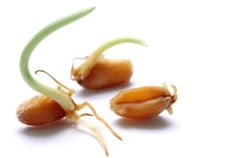Canola crush margins could be sliced in half and canola prices will
likely be on the rise in 2010 as a host of new and expanded crushing
facilities vie for a smaller crop, according to an equity analyst.
Greg Colman, analyst with Wellington West Capital Markets Inc., said
he can’t think of a scenario where canola prices won’t be on the rise
next year given that crushing capacity is increasing to 7.1 million
tonnes by mid-2010, up from 4.3 million tonnes in 2009.
Read Also

Manitoba community projects get support from HyLife
HyLife Fun Days 2025 donated $35,000 each to recreation and housing projects in Killarney, Steinach and Neepawa earlier this fall.
“I think canola is going up. That’s the implication, is that the price next year will be higher than the price this year.”
The other implication is that crush margins will tumble as 13 plants
attempt to secure seed from what Agriculture Canada estimates will be a
9.5 million tonne crop, which would be 25 percent smaller than the
2008-09 harvest.
“Both supply and demand dynamics appear to be conspiring to put
significant pressure on crush margins in the near term,” wrote Colman
in an Aug. 24 report about BioExx Extraction Technologies.
The average crush margin, which is the difference between what
plants sell their oil and meal for and what they pay for the seed,
should be around $120 per tonne in 2008-09. In previous years this
decade, the average has been half that amount.
“I don’t think it’s unreasonable that the annual average might pull back to that level,” said Colman.
The $60 number is his floor estimate. In his modelling, he is using $65 to $70 per tonne.
Darren Frank, market analyst with FarmLink Marketing Solutions, said
what happens to crush margins will largely depend on the size of the
canola crop. If it comes in at 11 million tonnes, it would ease the
pressure on prices and margins. Anything below 10 million would be
tight.
The wild card will be China’s activity in the market in 2010.
“If they step up and have a very aggressive fall program, we’re
going to see supplies get very tight heading into the last quarter of
the year.”
The canola basis is already unusually narrow. There’s even some positive basis numbers out there for deferred futures contracts.
“It has nothing to do with the crush right now. It’s the fact that
the line companies have a very strong book on in the export market and
they need to secure the seed,” said Frank.
He thinks canola prices will strengthen in 2010 but the upside will
be limited by price-sensitive markets like China and Mexico and the
possible downward pressure on soybean prices due to what could be a
larger-than-anticipated U.S. soybean harvest.
“You will have a hard time justifying $650 canola futures if you’ve got beans at $8,” he said.
Even at Colman’s $60 floor, Canadian crush facilities would be
generating positive cash flow because the operating costs for a 500,000
tonne per year facility are less than $40 per tonne.
The new construction and expansions being undertaken by Louis
Dreyfus, Richardson International Limited, Cargill and Viterra are
happening for good reason. There is surging demand for canola oil and
canola meal.
“It’s long-term bullish. It’s positive for the crush margins,” said Colman.
“It’s just in the near term you have this strange dynamic in 2010
where the crops are off and all the supply is coming on at the same
time.”















